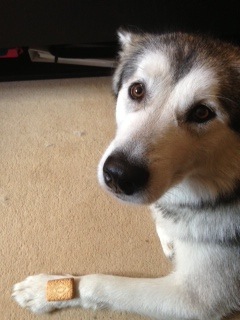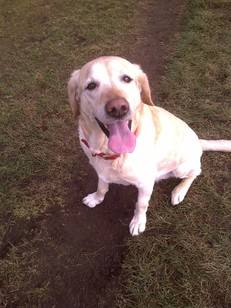Training Cats...?
Posted on
My blogs are often quite biased towards the canine community, so I thought I'd take the opportunity to write a short little blog on something that's been occupying my time recently... cat training!
As many of you know, I'm currently studying Year 1 of a Diploma with COAPE - a course about the behaviour of companion animals. The course is at degree level, offering 80 credits at Level 4 for year 1 - which is the same level as a degree course year 1. Each credit is equivalent to around 10 hours of study. So alongside my rather full time business (I envy people who have a 40 hour week!) I'm also trying to squeeze in 800 study hours in this academic year. The downside? It's frantic, exhausting and seems endless. The upside? It's fascinating, fun and I've learned so much and I'm also thoroughly enjoying the fact that the course content covers both canine and feline behaviour. Anyway! For Module 6 of the course, we have to undertake a small project to look at two different training methods - luring and shaping. There is endless debate over which is the best method to use in training animals. Luring is often seen as more direct, but the use of food to elicit a response can result in over excitement and arguably, slower learning, as the animal is so focused on the food, it is unable to realise what it is doing. Shaping is more difficult for the trainer, you simply sit back and mark (usually via a clicker) and reward movements that build up towards the end result - this needs patience on both sides, understanding of how to break down the end result and work towards this and the animal needs to tolerate a little frustration without getting angry or completely giving up. Of course in reality, most trainers use a little of both in their training, but this project is designed to compare the effectiveness of the two techniques, via teaching an animal to touch one of two black shapes on a white board - a relatively simple task...
We were allowed to chose either dogs or cats for this task, although encouraged not to simply chose one species because we thought it would be easier. So being a sucker for punishment, ahem, I mean, an adventurous type, I opted for cats.
I first used my neighbours gorgeous cat Baboo, a bright and friendly cat who is always happy to see me. It took 4 sessions to complete the experiment (there are a few more things we need to do on top of this, but I won't go into them here) and I was rather amazed at the results. It took around 60 'trials' of clicks and treats for Baboo to learn what he needed to do. At first it seemed impossible, but then slowly and surely I started to see progress, targetting the board, repeated looking to the correct shape, orienting himself to that side of the board and then finally... a touch! We were asked to film our training, so I've done a little edited version of it for you all to see, if you're curious, here:
Clever Baboo! When he worked it out, he was unstoppable, waiting by the board to touch the square again and earn his treat!
I still have my other 5 cats to do, but before I had worked with Baboo I was wondering if this was really going to be possible with cats - now I'm excited about getting started with my next feline 'subjects'! I think this once again shows the power of operant learning in animals - animals do what works and keep doing this provided they get something out of it. If we can find a way to leverage what they want to get, to reinforce behaviours we want, we have a very powerful training tool in our hands - no matter what the species!

 Oh it’s hard to fit in training time isn’t it?! I have every empathy for my customers who struggle to find time to squeeze in training sessions with their dogs - I often do too. I think that the problem is often that we see training as time consuming and difficult and maybe even worry that we’ll do it wrong or it won’t work, so we don’t start!
Oh it’s hard to fit in training time isn’t it?! I have every empathy for my customers who struggle to find time to squeeze in training sessions with their dogs - I often do too. I think that the problem is often that we see training as time consuming and difficult and maybe even worry that we’ll do it wrong or it won’t work, so we don’t start! 